If you want to attract Orioles, think sugar, fruit, and bugs. A mix of flowering vines, berry bushes, and native trees will provide them with everything they need.
Plants That Attract Orioles
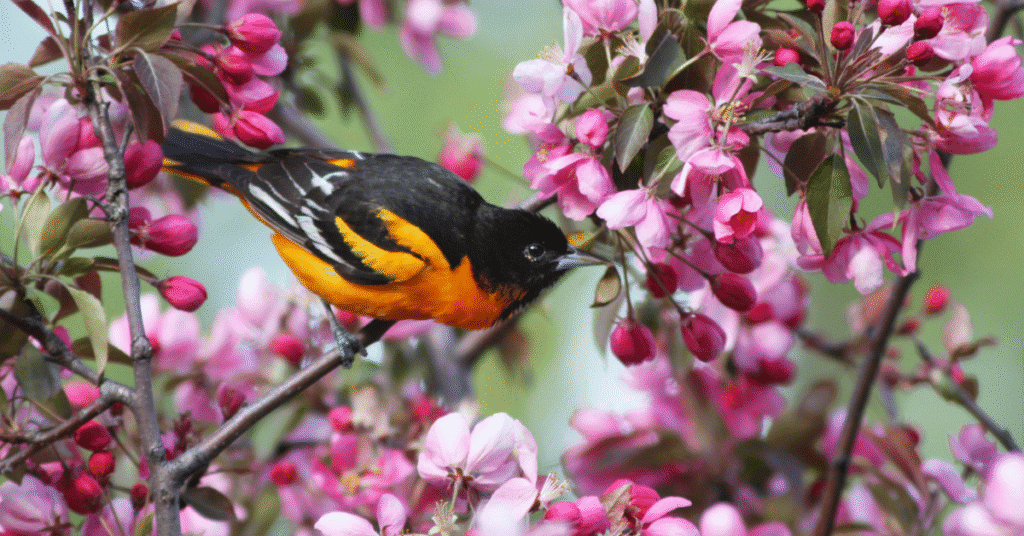
Orioles love trees, shrubs, and vines that provide nectar, fruit, or insects. Some very specific plants you can use are:
- Trumpet Vine (Campsis radicans) – produces tubular orange-red flowers, Orioles can’t resist.
- Hummingbird Mint (Agastache) – long-blooming nectar plant.
- Coral Honeysuckle (Lonicera sempervirens) – a native honeysuckle with red flowers (avoid the invasive Japanese honeysuckle).
- Serviceberry (Amelanchier) – produces early summer berries that Orioles feed on.
- Mulberry Trees (Morus spp.) – Orioles flock to ripening mulberries in late spring/early summer.
- Wild Cherry (Prunus serotina) – Orioles eat the fruit and forage for insects from the leaves.
- Raspberry & Blackberry Brambles (Rubus spp.) – provide both berries and insect habitat.
- Cuphea (Cuphea ignea or C. llavea) – a garden annual with tubular flowers, from which Orioles will get nectar from.
- Sunflowers (Helianthus spp.) – attract insects and provide seeds later in the season.
- Orange Trees (if you’re in a warmer climate) – Orioles are famously attracted to halved oranges.
Attracting Orioles Means Learning What They Eat
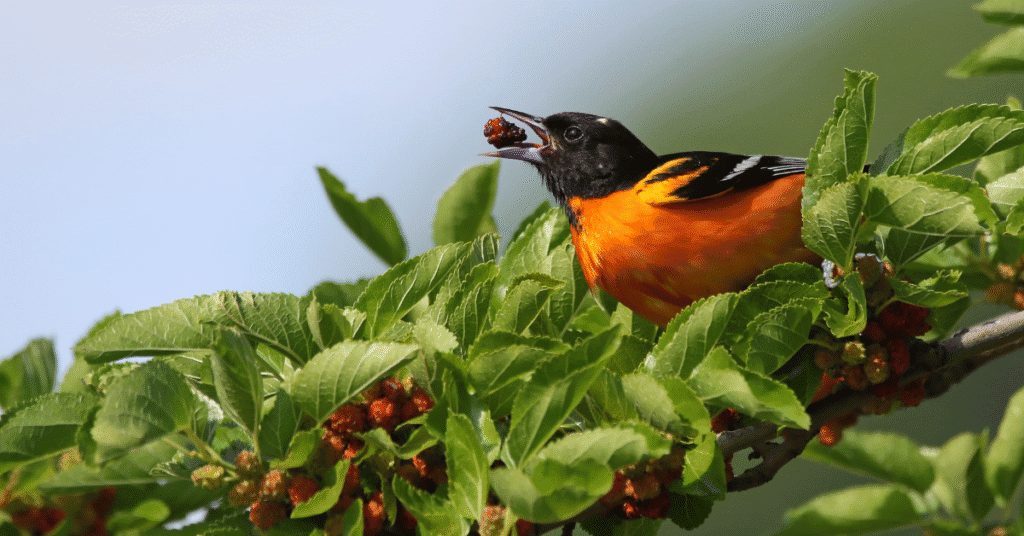
Orioles are omnivorous, with a diet that shifts through the seasons:
Nectar & Sugar
- Flower nectar (especially tubular red/orange flowers)
- Oranges, grape jelly, and sugar-water feeders
Fruits
- Mulberries, cherries, serviceberries, raspberries, blackberries
- Later in the summer, they’ll take apples, pears, and grapes
Insects (a huge part of their diet during nesting season)
- Caterpillars, grasshoppers, beetles, crickets
- Spiders (often fed to nestlings for protein)
- Wasps and other soft-bodied insects
Other Surprises
- Occasionally, small snails or even suet in wintering areas
- They’ll also forage in trees for insect eggs and larvae
How to Attract Orioles Year-Round: A Seasonal Plant and Feeder Plan
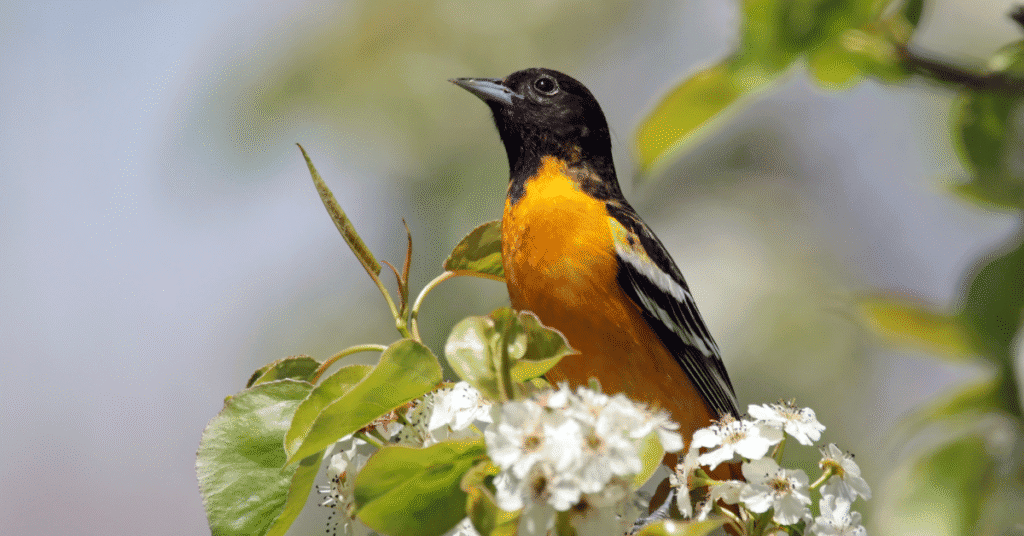
Spring (Arrival & Nesting Season)
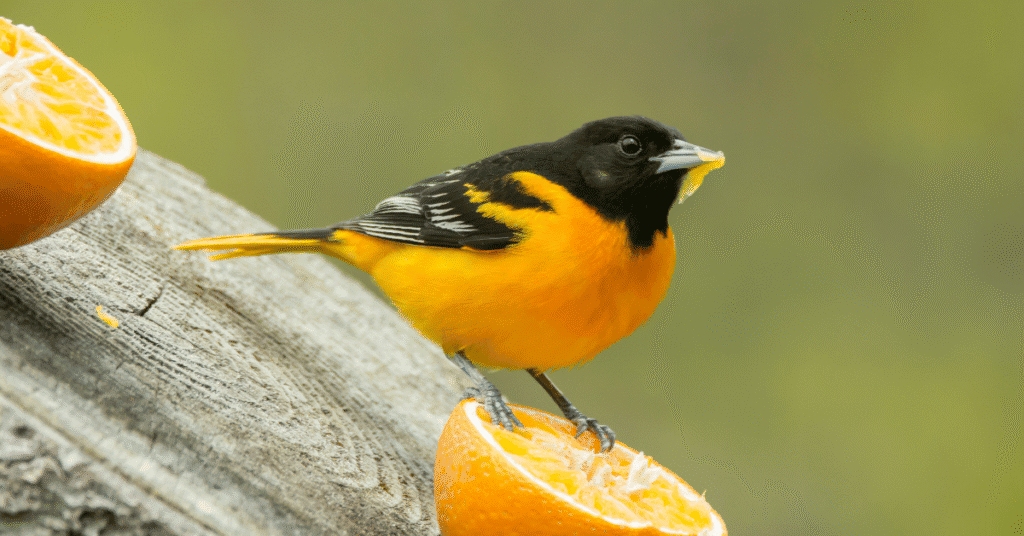
Orioles migrate north in April–May, and they’re hungry for quick sugars after the long journey.
Plants in Bloom:
- Trumpet Vine (Campsis radicans) – nectar-rich flowers
- Coral Honeysuckle (Lonicera sempervirens) – native red blooms
- Serviceberry (Amelanchier) – both flowers and early fruits
Feeders & Food:
- Offer halved oranges on a platform or hanging feeder.
- Set out grape jelly in small dishes (but keep portions small and fresh daily)
- Sugar-water feeder (similar to a hummingbird feeder but with larger ports; recipe: 1 part sugar, four parts water, no dye)
Why it Works:
- High-sugar foods fuel their migration
- Serviceberry trees attract early insects for protein
Summer (Breeding & Raising Young)
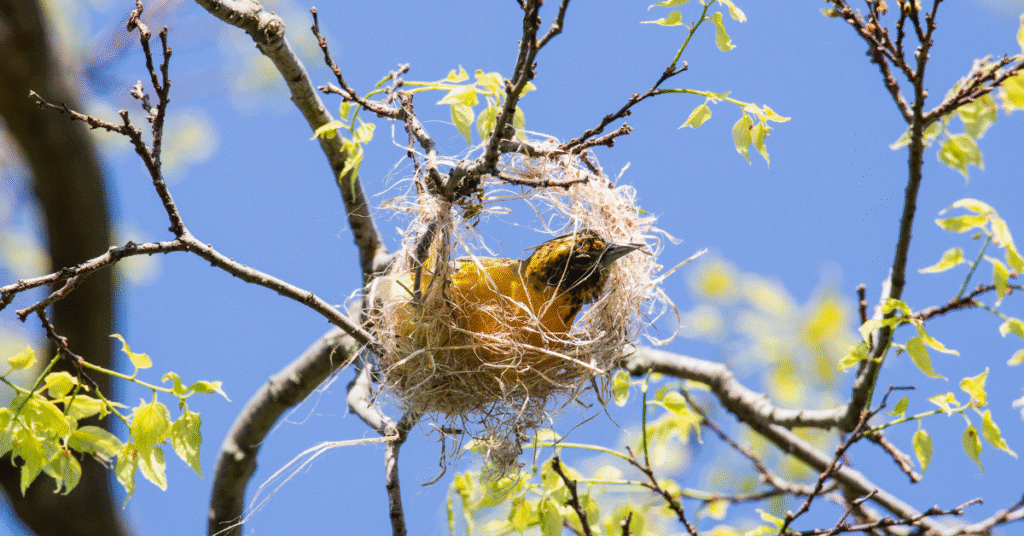
By June, the Orioles shift to more protein-heavy diets to feed chicks.
Plants in Season:
- Mulberry trees (Morus spp.) – ripe fruit is a magnet
- Wild Cherry (Prunus serotina) – berries + insects
- Blackberries & Raspberries (Rubus spp.) – both food and insect habitat
- Sunflowers (Helianthus spp.) – draw in caterpillars, beetles, + other insects
Feeders & Food:
- Continue offering fruit (oranges, berries)
- Live mealworms (Orioles love feeding them to nestlings)
- Keep jelly minimal; protein matters more now
Why it Works:
- Insects provide essential protein for baby chick development
- Fruit bushes and berry trees keep adults fueled and nesting nearby
Fall (Fueling for Migration)
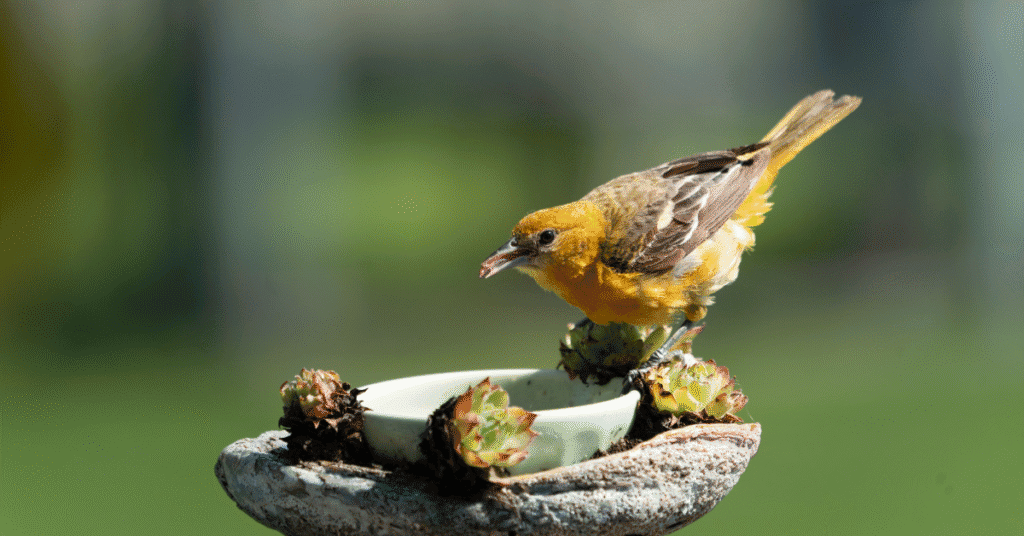
Orioles start heading south in late August–September and need energy reserves.
Plants in Season:
- Grapevines (Vitis spp.) – Orioles love ripe grapes
- Elderberries (Sambucus canadensis) – clusters of berries at just the right time
- Late-blooming nectar plants like Cuphea (Cuphea ignea) and Hummingbird Mint (Agastache)
Feeders & Food:
- Keep feeders out until mid-September with oranges and nectar
- Add late-season berries (grapes, elderberries)
- Avoid overfeeding jelly (too much sugar without nutrients for migration)
Why it Works:
- High-sugar fruit provides migration fuel
- Flowering plants give late nectar for extra calories